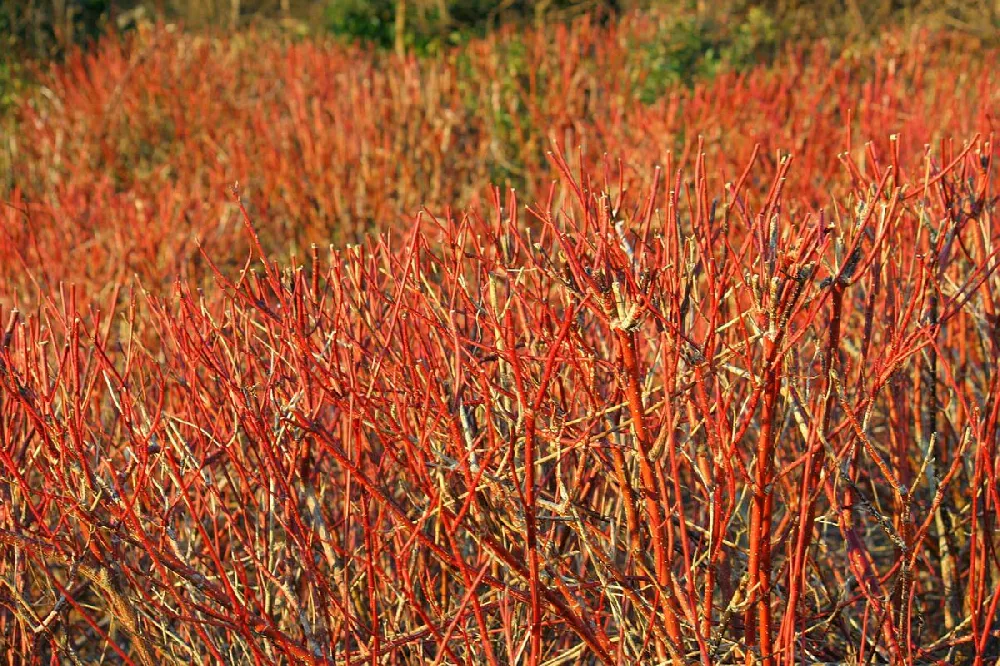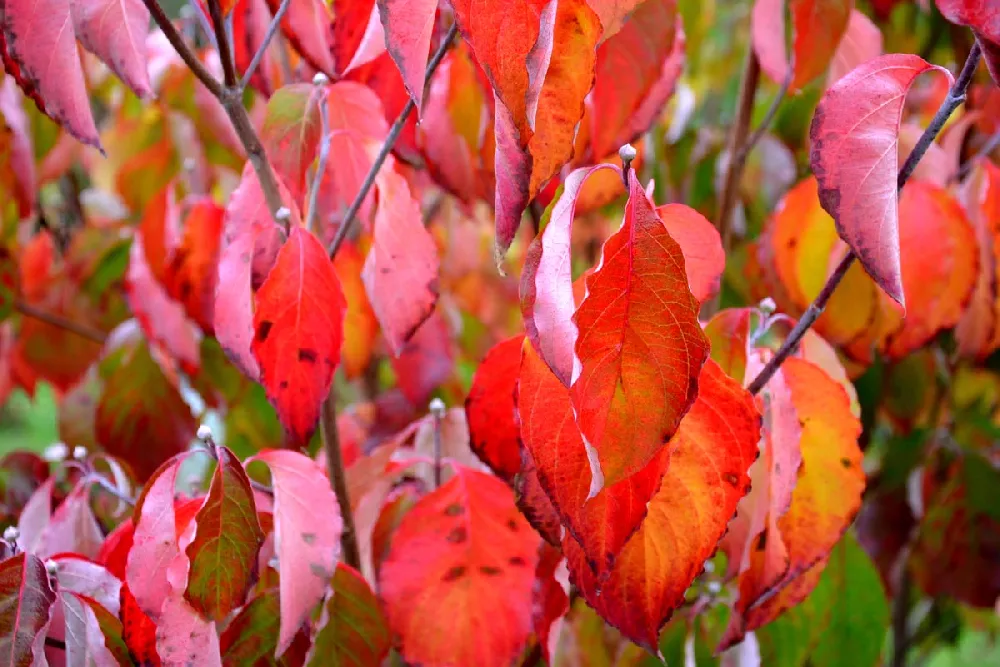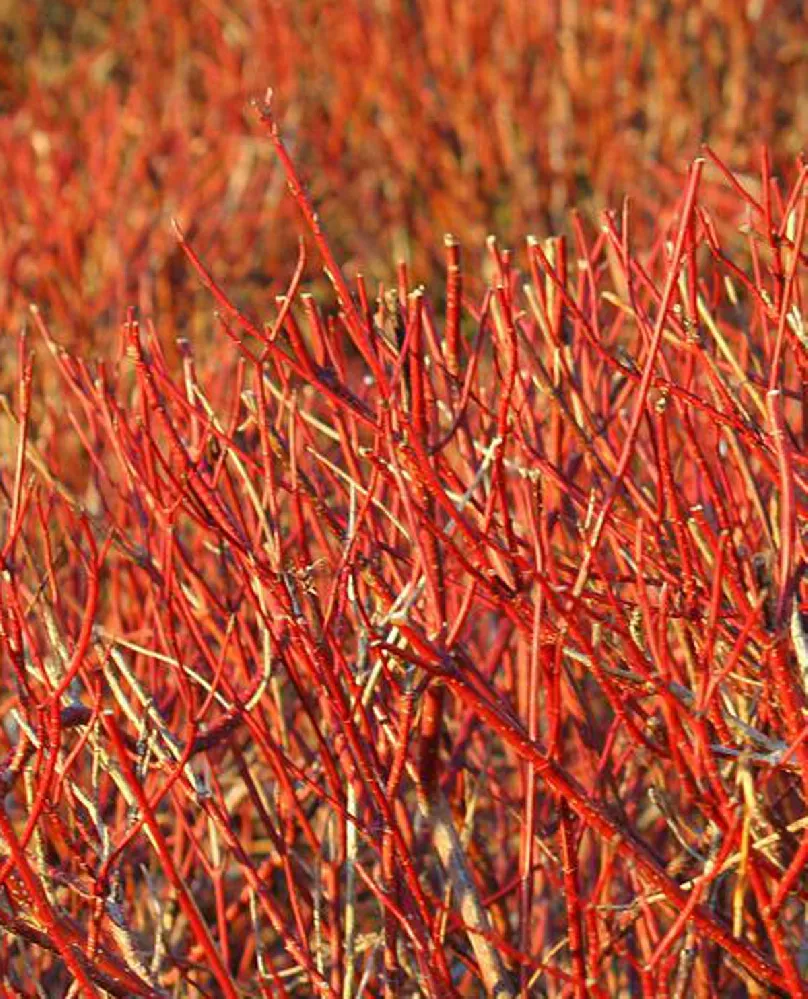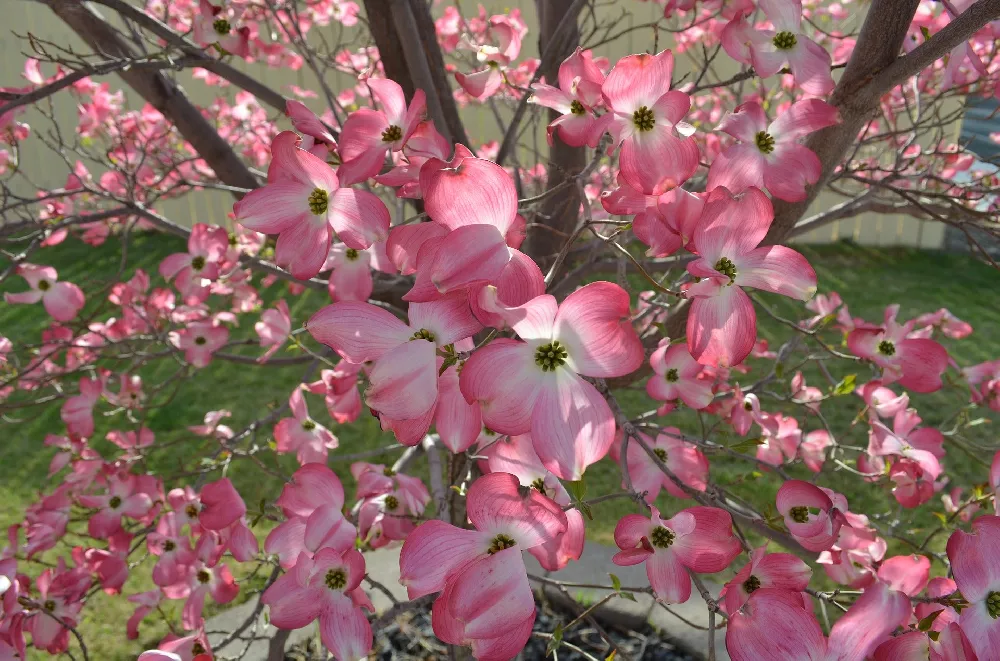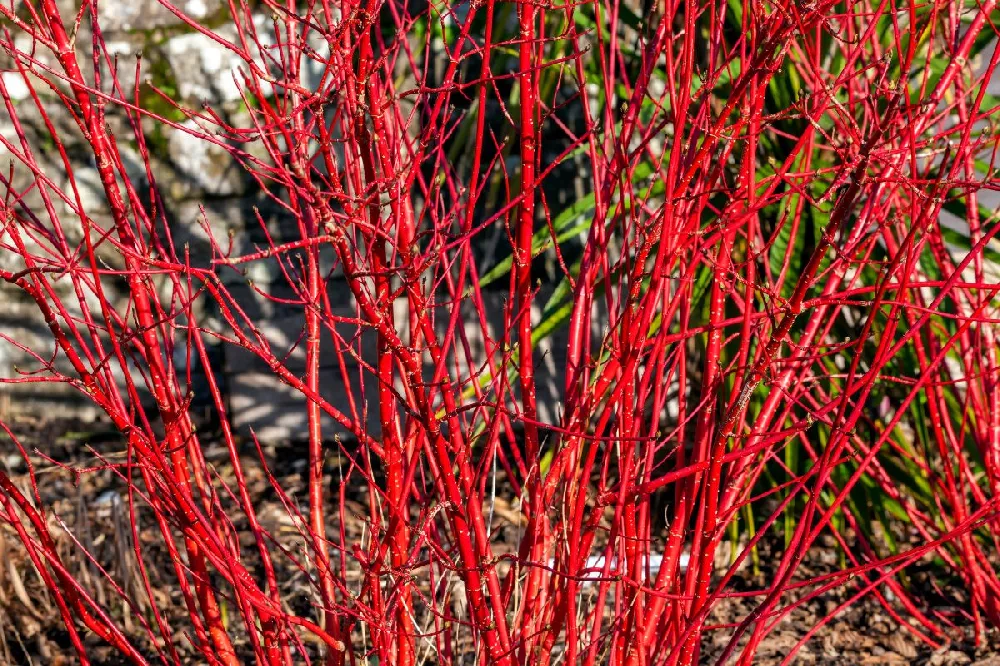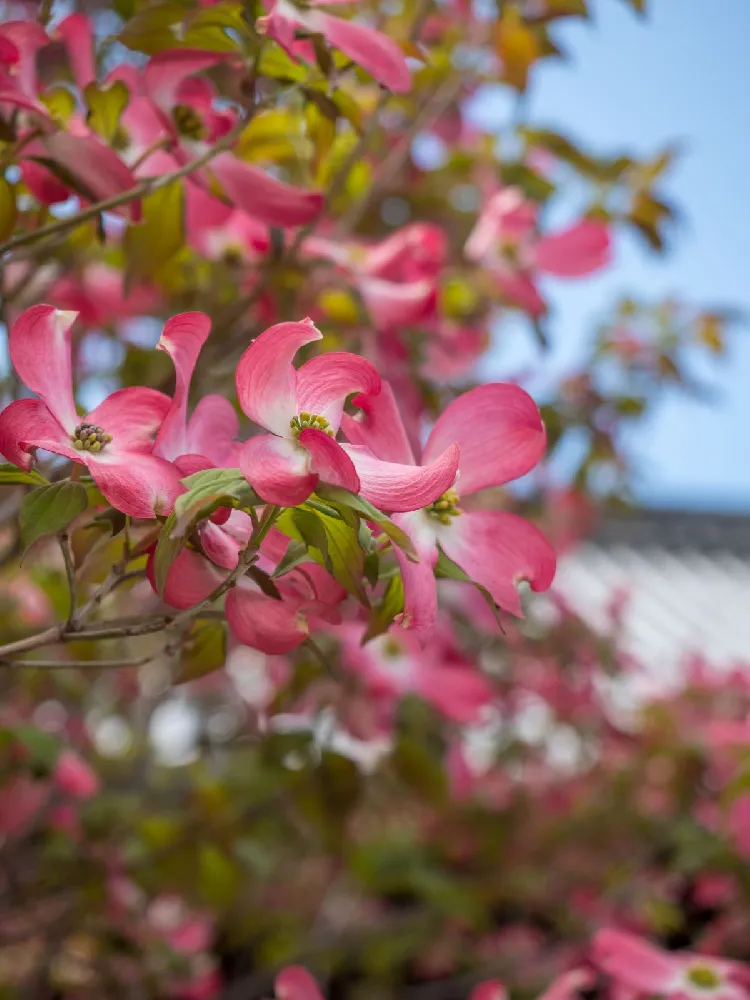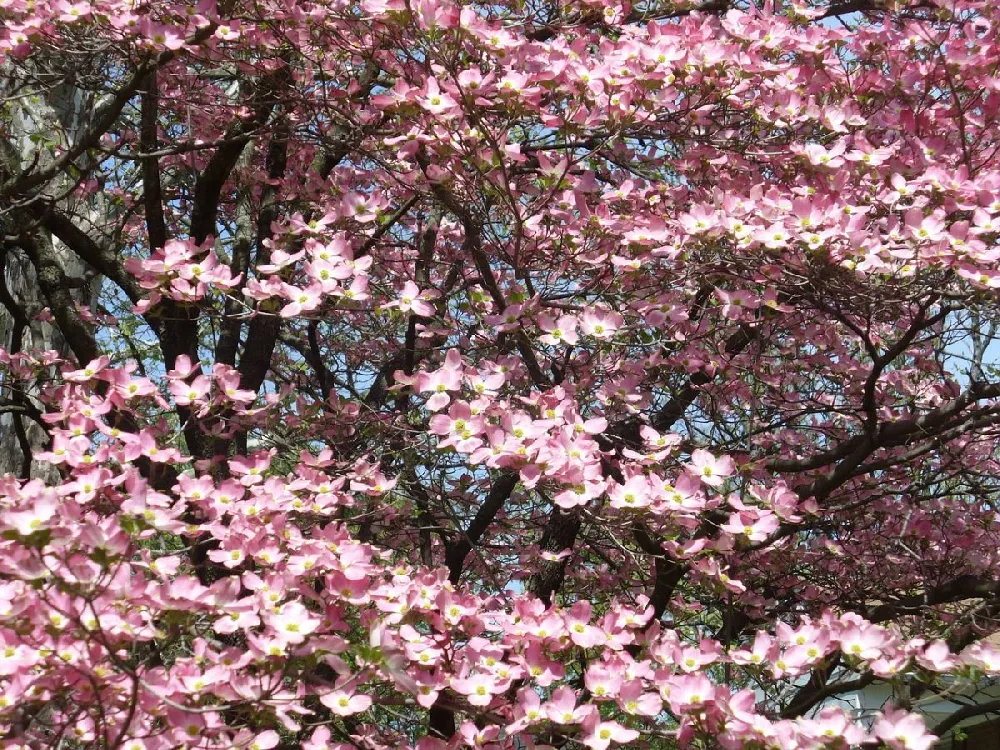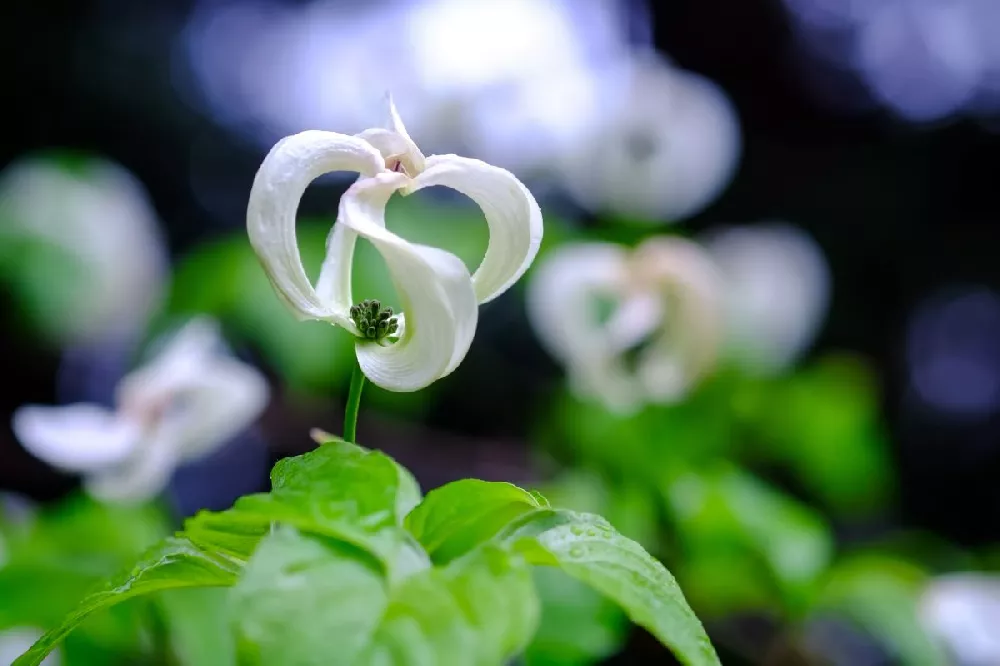- Home >
- Ornamental Plants >
- Red Twig Dogwood
Red Twig Dogwood for Sale - Buying & Growing Guide
- Ships in 1-2 days
- 1-Year Warranty Eligible
- Pots or accessories are not included unless specified in the product options.
Shipping Details:
Once your order is shipped, you’ll receive an email with a tracking number and estimated delivery date. Most orders ship immediately, but some items are seasonal and may only ship in spring or fall. These products are noted on the website.
The red twig dogwood does not receive as much praise as other, more popular dogwood varieties. But this species, Cornus sericea, deserves far more credit than it currently gets, as it provides visual interest during all seasons. In spring, this plant holds clusters of small white flowers. However, it is the distinct bright red stem color that gives the plant its name and makes it stand out as a vibrant contrast to the stark winter landscape. Here are some features to love about the red twig dogwood:
- Vibrant red twigs attract attention, especially in winter.
- White flower clusters appear in mid-spring.
- The tree is effective for erosion control on slopes.
Plant Care
Sunlight

Grows in full sun or partial shade but displays the best ornamental features with more light.
Watering
Water regularly until establishment, then during droughts when the plant is mature.
Fertilizing

Nitrogen-rich products are best, but fertilization needs are generally low. Feed once per year or less.
Planting and Care
Planting instructions
The red twig dogwood can adapt to several different soil types but will perform best in consistently moist to wet areas. This species is also able to adapt to either full sunlight or partial shade, so it is relatively easy to find a growing location. Once you do, dig a hole that is significantly wider than the root ball and about as deep as the root ball is tall. Backfill with organically rich soil and provide plenty of water during and after the planting process.
Watering and nutrients
Consistent watering is important for the red twig dogwood during the first few years of its life. During this period, give enough water to keep the soil consistently moist. Once this plant has become established, it can withstand drought periods. Typically, the fertilization needs for red twig dogwoods are low. A single application of a nitrogen-rich fertilizer in the spring will be enough to encourage healthy growth.
Pollination
Although the red twig dogwood has bisexual flowers, it is not a self-pollinating plant. Instead, the flowers that appear on a single plant are incompatible with one another; you’ll need multiple plants for this species to produce fruit. When successful pollination does occur, the red twig dogwood will grow a set of white berries that form in dense clusters across the shrub. Those fruits are edible but tend to have an unfavorable flavor.
Pruning
Prune your red twig dogwood during the late winter to early spring months of February and March. Am to remove any part of the plant that shows signs of disease or is entirely dead. You may also choose to cut this plant to reduce its size and spread. When left unpruned, the red twig dogwood can spread via suckers, colonizing a much larger area than you likely intended for it to grow in.
Pests, diseases, and animals
The most prevalent disease issues that a red twig dogwood will face are canker and twig blight. Whether you grow the original version of this plant or one of the many cultivars that exist, such complications are possible. Plenty of other problems can arise as well for the red twig dogwood. Some of the most common pest infestations for this plant are the result of leaf miners, scale, sawflies, and other widespread garden insects.
Achieving maximum results
One of the more practical uses of the red twig dogwood is as a form of erosion control. Try planting this species on slopes to prevent the soil from washing away during storms. The plant is also ideal for creating large shrub masses. This planting style comes with a downside though, as the red twig dogwood can be difficult to control if it finds favorable growing conditions. Left unchecked, a group of red twig dogwoods can form a dense colony and begin overtaking other plants in your garden.
FAQs
Do deer eat the red twig dogwood?
One convenient aspect of growing a red twig dogwood in your yard is that they are usually resistant to deer browsing. This resilience makes the red twig dogwood a top choice for any gardener who has struggled to keep ornamental plants safe from being eaten. But while the red twig dogwood does resist issues with deer, other creatures — mainly insects — will enjoy eating this plant.
How large do red twig dogwoods grow?
Mature red twig dogwoods can reach heights of 8 to 10 feet tall. Their spreads can be just as large and may surpass those dimensions in some cases. Also, it does not take long for the red twig dogwood to reach these sizes as this plant tends to be fast-growing in most garden locations. When planting this species, be sure to anticipate its mature size by giving it plenty of adjacent space into which it can grow.
How far apart should you grow red twig dogwoods?
The spacing you leave between your red twig dogwoods will depend on how you want the plant to look once it has grown in. To create a consistent, dense hedge of red twig dogwoods, plant them about 4 feet away from one another. The fast growth of these plants will quickly fill in those gaps. If you want to treat your red twig dogwood as a stand-alone specimen, give it considerably more space.
Compare Similar Products
You can't add more Product Name - Product size to the cart.
OK